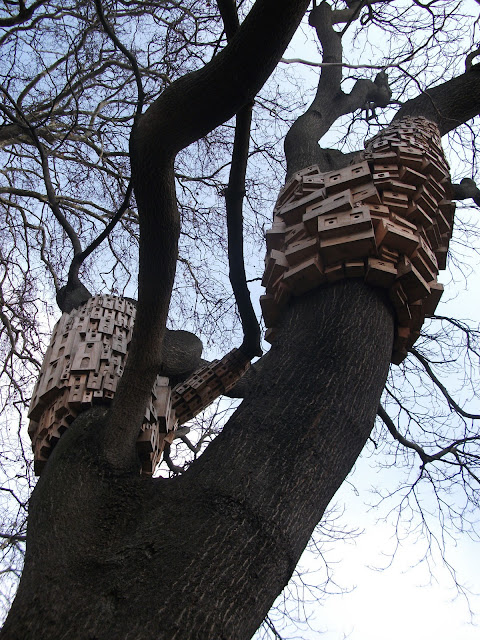It's Imbolg in a few days. In honour of this, and continuing from the Carahunge post about Dog in a Spirit Hole, here is Cow in a Dolmen.
 |
| Spirit Holes: L: Armenia R: Wales |
When I used to live in Cardiff, I became very attached to Tinkinswood and St. Lythans. Check those links to learn more about them.
One day I rocked up to St. L's to find a cow there. It seemed to like me, and followed me around the stones - posing for pictures to the point where it was actually hard to take one without him in it. Sort of like the Genius Loci of Carahung.
St. L's is also know as Gwal-y-Filiast in Welsh - 'Kennel of the Greyhound Bitch'. He's not exactly as graceful as a greyhound, but a black bull certainly has its own connotations in folk mythology.
A long time ago, someone put the whole of Mary Trevelyan's Folk-lore and Folk-stories of Wales on the web. Can't seem to find it anymore though. In it, St. Lythans is referred to as 'the stones in Maes-Y-Felin Field' and Tinkinswood as 'the great cromlech in Duffryn woods':
Duffryn, near St. Nicholas, in the Vale of Glamorgan, has Druidical stones scattered about in various places. Some of these have stories attached to them. Old people in the beginning of the nineteenth century said that once a year, on Midsummer Eve, the stones in Maes-y-felin Field whirled round three times, and made curtsies; and if anybody went to them on Hallowe'en, and whispered a wish in good faith, it would be obtained.
The field in which these stones stand was unprofitable, and people said the land was under a curse. The stones in Tinkins Wood, some distance away, but belonging to the same Druidical series, were said to be women turned into stone for dancing on Sunday. The great cromlech in the Duffryn Woods was an unlucky place to sleep in on one of the "three spirit nights," for the person who did so would die, go raving mad, or become a poet.
These stones were haunted by the ghosts of Druids, who were in the habit of punishing wicked people by beating them, and were particularly hard in their treatment of drunkards. A man fond of drink slept there one night, and his experiences were terrible. He declared the Druids beat him first, and then whirled him up to the sky, from which he looked down and saw the moon and stars thousands of miles below him. The Druids held him suspended by his hair in the mid-heaven, until the first peep of day, and then let him drop down to the Duffryn woods, where he was found in a great oak by farm-labourers.
Tinkinswood was originally built around 4000 B.C., a megalithic chamber constructed for the communal burial of the dead. The enormous cap stone weighs some 40
tons and is thought to be the largest in Britain.
I have so many fond memories of those stones. I used to head out to Tinkinswood every full moon. On a clear night the shaft of moonlight would fall right between her legs, like a path to her inner chamber. Although, before the excavation, she would have been buried beneath the earth. In spring the stream sometimes flooded and you'd have to wade through the field to get to her.
 |
| Tinkins' Fairy Woods |
Back in 2007 I was living in an attic above a gypsy jazz musician. There was a full lunar eclipse. I persuaded her to come with me. She brought her fiddle and I took my whistle. We lay on the capstone watching the moon turn blood-red, then go out completely. We took tea and Welsh cakes. It was so cold. We played until we couldn't feel our fingers anymore.
I've just resurrected an old blog post from 2007 when I organised an impromptu Beltane festival at Tinkinswood. You can read about it in: Beltane Fire Moon.
 | |
| 'Spirit Hole' at St. Lythans |


























